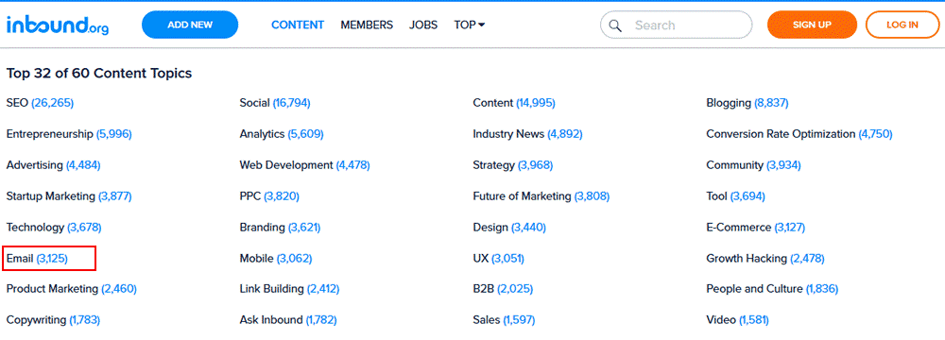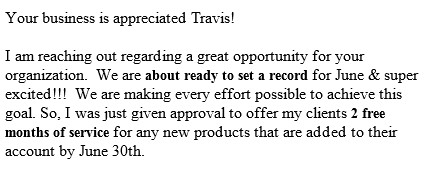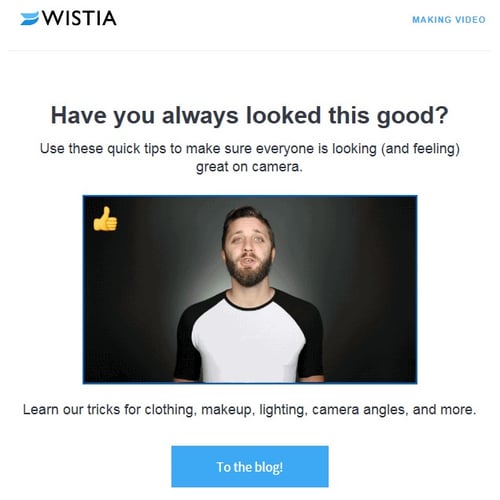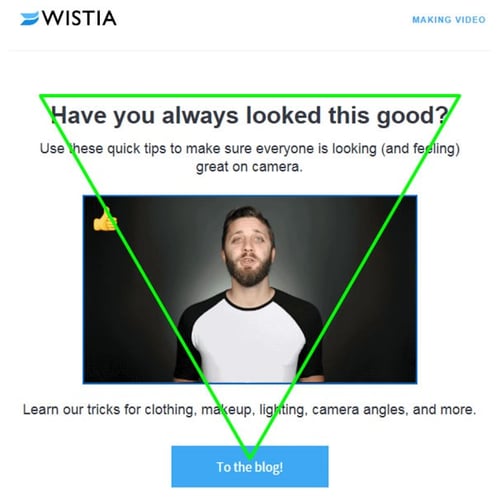Email marketing is both scary and exciting for marketers. Scary because none of us wants to be “that company” who spams their database with junk mail. Exciting because email marketing has the biggest ROI out there. For for every dollar spent, email brings a $38 return on investment. This is higher than any other digital medium – including social and PPC. In fact, when it comes to customer acquisition, email is 40 times more effective than Facebook or Twitter.
“By 2019, email is expected to reach 90.9% of those online.”
- Campaign Monitor
Further, 60 percent of consumers who were polled, said they prefer email communications over any other to keep in touch with the brands they care about. Way cool.
This is all fascinating stuff. Which begs the question: if email marketing has the highest ROI out there, and is the most preferred method of communication between brands and consumers, why then is nobody talking about it?

In this screenshot from the top topics at inbound.org, email is 21st in the list of top content topics. Yet, all the data points to email being the best way to have a return on investment AND consumers actually prefer it over any other method.
So Why Isn't Everyone Doing It?
Email has been given a bad rap over the years, thanks to all the junky spam that clogs your inbox every day. Also, not many marketers really understand how to do email marketing effectively because it’s so nuanced and so intricate. There are dozens of variables to juggle when crafting a killer email, so it’s easy to become overwhelmed. We opt instead to send out monthly blasts to our databases and hope for the best.
Marketing directors are afraid to step out of their comfort zone to fully utilize the power of a well-planned email campaign. Plus, email marketing tends to fall on the back burner amidst all the other tactics at our fingertips – as you can see in the screenshot above.
Email Is Not “The Next Big Thing”
It’s always been the big thing. No other form of digital marketing puts so much data within our reach. You can use literally any piece of information about your customers to personalize email messages in amazing ways.
Here are Some Tips:
Personalize the subject matter of an email – not just the subject (recipient) itself: It’s all well and good to insert a first name, or send out happy birthday emails. Take it to the next level by personalizing the actual content of your emails based on what you know about your persona. From the verbiage to the imagery, you should craft your email messages with care – knowing that if well executed, you could be on the receiving end of that 38-to-1 ROI statistic.
Give the power to the recipient: In essence, don’t sell. Instead, have a conversation. Anytime you start using sales jargon, consumers put up their mental shields and tune out. The first chance you give them to junk your email, they will. This approach pits you against the customer. It should be you + the customer against the problem you’re trying to solve together.
Don’t talk about yourself: Email correspondence always has, and always will be, a personal relationship between the sender and the recipient. This is one of the reasons why most people prefer email over other platforms to keep in touch with brands. Use that to your advantage.
Ask questions: Open ended questions are best. A yes/no question gives the recipient the option to say “no” and then abandon your email altogether. Which, in some respects, might be a good thing because it disqualifies those recipients immediately. You’ll need to make that decision for yourself based on the goal of your email.
Focus your content on the call-to-action: Use headings, text, and images to lead the reader to the call-to-action you want them to take. The goal of any email is to get a click. That’s the most important thing you’re optimizing for: a click.
Here’s an Example of These Tips Used Poorly:
Below is an email that landed in my inbox the other day. Go ahead and give it a read and determine what’s wrong with this approach, using the tips from above.
 Got any ideas? Well, they got one thing right: my first name. However, I’ve never actually done business with this company, so they’re making a big assumption about me. The biggest issue, though, is that this email talks all about the company it’s from - I’ve left out their name to protect the guilty.
Got any ideas? Well, they got one thing right: my first name. However, I’ve never actually done business with this company, so they’re making a big assumption about me. The biggest issue, though, is that this email talks all about the company it’s from - I’ve left out their name to protect the guilty.
Why do I care that you’re about to set a record for June? Why should I share in your excitement? Keep in mind, I don’t even know what the offer is yet, nor did I ever opt-in to hear from this company. That’s a big taboo, and it’s actually illegal.
They go on to offer two free months of service, but they never connected with me about a problem I have. They offered a solution to a non-existent problem, so the offer fell on deaf ears.
Finally, there was nothing in this email for me to click on for more information. How do I take advantage of the offer? Where do I go? What do I do? Sure, I could just reply to the email, but that defeats the purpose doesn’t it? If the goal of an email is to get a click, this email missed the mark entirely. But hey, good job at using my first name.
Here’s an example of an email done right:
This one landed in my inbox as well. And you know what? I clicked it. Give it a read through the lens of the above tips and see if you can figure out what makes this email so great:
 Notice how it doesn’t use my name or email address or anything else they may know about me? Instead, Wistia opens with a question seemingly completely unrelated to what they do. “Have you always looked this good?” Well, if you asked my wife, she’d say yes. My coworkers here at the office? Ehh … the results are mixed I’d say.
Notice how it doesn’t use my name or email address or anything else they may know about me? Instead, Wistia opens with a question seemingly completely unrelated to what they do. “Have you always looked this good?” Well, if you asked my wife, she’d say yes. My coworkers here at the office? Ehh … the results are mixed I’d say.
The question itself is intriguing and it piques interest. Then it’s followed up with some supporting copy to explain why they’re asking the question in the first place. After the supporting copy, is an image of a guy talking on camera - it’s actually an animated GIF, which you can use in emails, by the way.
Also, aside from the logo, this message doesn’t really talk about Wistia at all. It talks about the benefits they have to solve a problem: how to look good on camera.
Leighton Interactive is a partner of Wistia's, and they know we do video production for our clients. This email was personalized with that information. They didn’t email me pitching their video services, because they already know we use them. Instead, they sent me content on how to make our videos better. That’s how to personalize.
It wraps it up with more specifics on the tips, and then a bright blue CTA to visit their blog. Notice how the copy in the CTA isn’t salesy? It’s fun and laid back. It could have easily read “Read the Tips Here,” or “Click Here for More.” But Wistia knows their audience, and they used language that'll resonate with their audience. That's another great way to personalize your messages.
You may not have noticed, but they also employed a tactic to draw the eye towards the CTA. Campaign Monitor calls it the inverted pyramid:
 It seems so obvious with the pyramid on it, doesn’t it? But, it’s bloody brilliant. Almost as if they put some thought into this email ... as if they wanted the recipient to click to their blog to read the tips … as if they optimized for that click. Who would have thought?
It seems so obvious with the pyramid on it, doesn’t it? But, it’s bloody brilliant. Almost as if they put some thought into this email ... as if they wanted the recipient to click to their blog to read the tips … as if they optimized for that click. Who would have thought?
Go Forth, and Optimize Your Email Marketing ROI!
Next time you’re crafting an email, reference and implement these tips. If you have the ability to A/B test, then do it. You’ll quickly gain valuable knowledge about what works and doesn’t work for your database. By using these methods to optimize your emails, you’ll quickly stop viewing email marketing as a lackluster, back-burner tactic, because it’s not. It’s the most profitable way to bring in ROI for your business.
